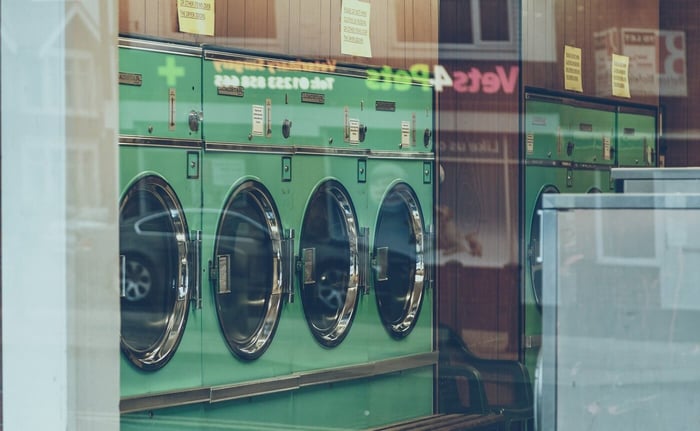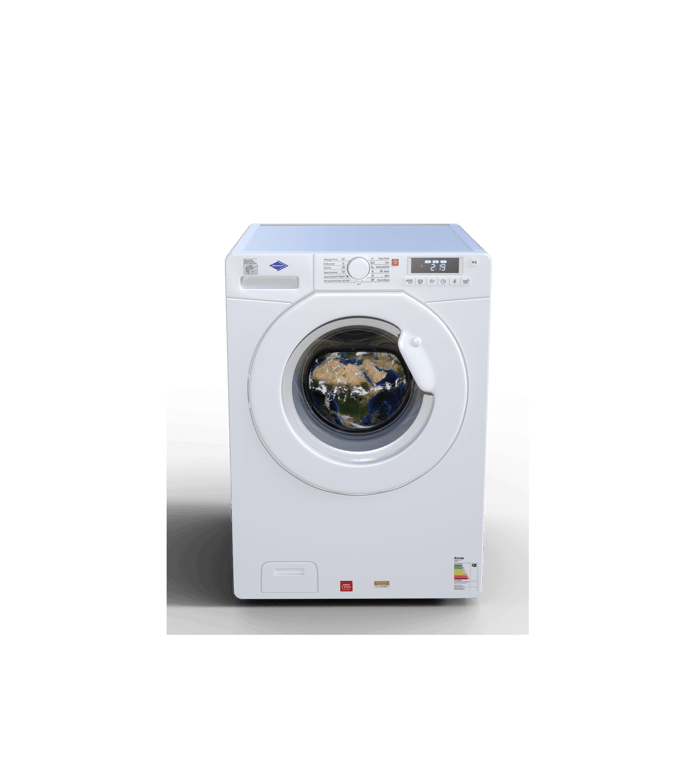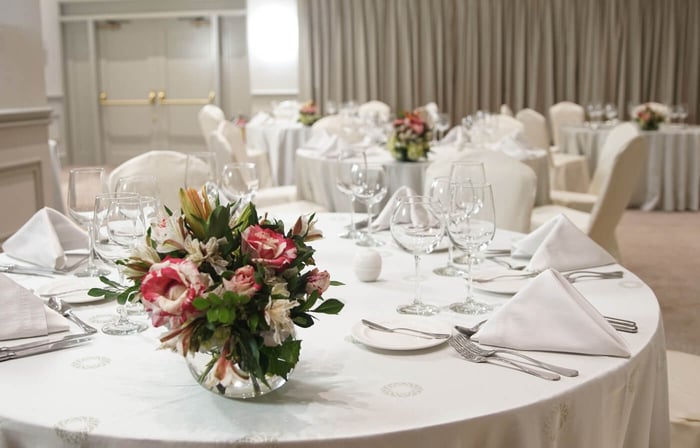Many commercial laundry plants have been in existence for decades. In some cases, arranging table linens throughout a commercial laundry are even separated into different buildings. In looking at efficiencies in “product flow”, it would be a great exercise to start with a fresh empty map of the operation. Look at how products, such as table linen would flow in a “U” shaped or “straight through” configuration; where soiled product comes in one side and exits the other; or flows from one side – in a “U” – to the other. This exercise will undoubtedly bring some insight into possible improvements in product flow and efficiency. It’s not only the direction of product flow, but the staging of product in front of machines and operations, so that production is continuous and without interruption. Questions to be addressed:
- Is the soil sorted by load, pre-weighed, and ready for the wash floor?
- Is the dried or conditioned product stationed up behind the next finish operation?
- Is the finished product arranged and shelved in a way most efficient in pulling your new loads?
- Is the soil washed and finished in an order that allows full loads to be readied for the routes, without having to go back and finish the fill?
These are all questions that should be addressed with a fresh look at the operation. And many times, good vendor partners can provide such efficiency audits at no charge, providing a fresh view of the operation. In addition to product flow, labor movement/management can assist in efficiency of production. For instance, you may have certain times of the day where the largest amount of specific product is running through machinery… such as ironers. It is important to have those machines at full capacity, even if you have to pull labor from other departments to make sure that all the lanes are running. This not only maximizes labor use, but reduces utilities in some cases.  With regard to soil sorting, one would think that an industry such as ours has that part covered. But a review of this part of the textile journey can sometimes increase efficiency, as well as cleanliness of the product. For instance, there are some table linens that can and should be washed together, that are not obvious. Milliken’s “Checkpoint” and “Signature Stripe Bistro Napkins” are designed to wash with pure whites. Many operators are not aware of this. Other products should not be washed together, such as any microfiber product mixed with cotton textiles. A review of soil sorting with your vendors is a good idea; especially in table linens. The key elements are product soil mix, staging at all parts of the process, labor station management, and final product shelving. Good management of these elements all point to production efficiency.
With regard to soil sorting, one would think that an industry such as ours has that part covered. But a review of this part of the textile journey can sometimes increase efficiency, as well as cleanliness of the product. For instance, there are some table linens that can and should be washed together, that are not obvious. Milliken’s “Checkpoint” and “Signature Stripe Bistro Napkins” are designed to wash with pure whites. Many operators are not aware of this. Other products should not be washed together, such as any microfiber product mixed with cotton textiles. A review of soil sorting with your vendors is a good idea; especially in table linens. The key elements are product soil mix, staging at all parts of the process, labor station management, and final product shelving. Good management of these elements all point to production efficiency.
Different Types of Table Linens
Direct Textile Store offers different types of bulk table linens. Table linens come in various types, each with different purposes and adding distinct aesthetics to table settings. Here are some of the most common types:
1. Tablecloths: Tablecloths are large pieces of fabric that cover the entire surface of a table. They come in a wide range of sizes, shapes, colors, and patterns to fit different table sizes and occasions. Tablecloths are versatile and can be used for both formal and informal dining settings, adding elegance and protection to the table surface.
2. Table Runners: Table runners are long, narrow strips of fabric that run along the center of a table, from one end to the other. They are often used as decorative accents to add color, texture, and visual interest to the table setting. Table runners can be placed on top of a tablecloth or directly on the table surface, depending on the desired look.
3. Placemats: Placemats are individual mats placed at each seat around the table to protect the table surface from spills, heat, and scratches. They come in various materials, such as fabric, plastic, bamboo, and leather, and can be found in a wide range of colors, shapes, and designs to complement different table settings.
4. Napkins: Napkins are small pieces of fabric used for wiping the mouth and hands during meals. They come in various sizes, shapes, and materials, such as cotton, linen, polyester, and blends. Napkins are often folded and placed on or beside each dinner plate, adding a decorative touch to the table setting.
5. Table Skirts: Table skirts are fabric panels that hang from the edge of a table to conceal the legs and create a more formal and elegant look. They are commonly used for banquet tables, buffets, and special events such as weddings, parties, and conferences. Table skirts come in various lengths, styles, and colors to match different table sizes and decor themes.
6. Chair Covers: Chair covers are fabric covers that are placed over dining chairs to protect them from stains, spills, and wear. They are often used for special events, such as weddings, banquets, and formal dinners, to create a cohesive and elegant look. Chair covers come in various styles, sizes, and fabrics, including stretchy spandex, loose-fitting linen, and tailored polyester.
7. Table Overlays: Table overlays are decorative pieces of fabric placed on top of a tablecloth to add texture, color, and visual interest to the table setting. They come in various shapes, sizes, and materials, such as lace, satin, organza, and sequins, and can be used alone or layered with other table linens for a more elaborate look.
Properly arranging table linens throughout a commercial laundry is an important step to maintaining a high-quality sanitation level. Not properly storing table linens can lead to cross-contamination risks and the wrong usage of chemicals and other materials, which can be costly for businesses. To keep everything in order, table linens should be sorted based on their material composition, size and color. When sorting, workers should also inspect table linens for any obvious stains or damages that can indicate either extra care needs to be taken with the item during cleaning or that the item should be discarded altogether. Following these sorting guidelines can help ensure that table linens are cleaned and stored efficiently within commercial laundry operations while also helping maintain quality in service.
About the Author
Haley Bridges, Marketing Assistant at Direct Textile Store
Haley Bridges has served as Marketing Assistant at Direct Textile Store, where she specializes in hospitality linens, uniforms, and bulk textile solutions. She works closely with hotels, restaurants, and healthcare facilities to match them with durable, high-quality products that balance both performance and value. Haley's expertise in textile sourcing and merchandising strategy helps businesses make confident purchasing decisions while staying ahead of industry trends.
If you need assistance, contact Direct Textile Store Customer Service at 800-615-5822





